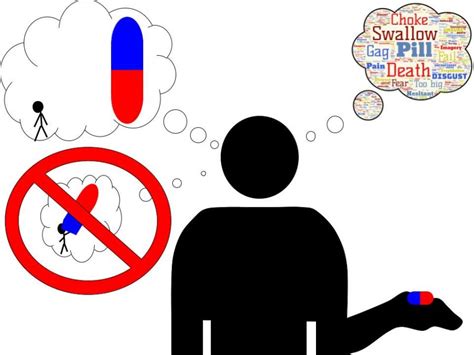No More Pill-Swallowing Fears: The Cup Approach
Swallowing pills can be a daunting task for many, causing anxiety and even triggering gag reflexes. Children, the elderly, and individuals with certain medical conditions often struggle. But there's a simple, effective technique that can alleviate this common problem: the cup approach. This method significantly improves the ease and success rate of pill swallowing, reducing stress and making medication adherence much simpler. This article will explore the cup approach in detail, addressing common concerns and providing helpful tips for mastering this technique.
What is the Cup Approach to Swallowing Pills?
The cup approach involves using a small cup, typically a shot glass or a similarly sized container, to facilitate pill swallowing. Instead of dropping the pill directly onto the tongue, you place it in the back of the cup, add a little water or other liquid, and tilt your head back to drink the pill down. This method offers several key advantages over traditional techniques.
How to Use the Cup Approach: A Step-by-Step Guide
- Choose your cup: Select a small, smooth-rimmed cup. Avoid cups with overly wide or narrow rims.
- Position the pill: Place the pill at the back of the cup, ensuring it's not resting against the side.
- Add liquid: Add a small amount of liquid—water, juice, or even a spoonful of applesauce—to the cup. The liquid helps the pill slide smoothly down your throat.
- Tilt your head: Tilt your head slightly back.
- Drink: Bring the cup to your lips and drink the liquid and the pill in one continuous motion. Avoid sipping, as this can cause the pill to get stuck.
- Follow with liquid: Take another sip of water to ensure the pill goes down completely.
Why Does the Cup Approach Work So Well?
The cup approach addresses several common challenges associated with pill swallowing:
- Visual distraction: Many people struggle because they focus too much on the pill itself. The cup method helps distract from the pill, making the swallowing process less daunting.
- Placement control: The cup offers better control over pill placement in the mouth, preventing the pill from getting stuck on the tongue or the roof of the mouth.
- Smooth transition: The liquid aids in a smooth and controlled transit of the pill down the throat.
Addressing Common Concerns: FAQs
What if the pill gets stuck in the cup?
Gently swirl the liquid in the cup to dislodge the pill. If it remains stuck, try using a different cup or adding a slightly thicker liquid.
Can I use this method with all types of pills?
While this method works well for most pills, some extended-release or large pills might require a different approach. Always consult your doctor or pharmacist if you have concerns about a particular medication.
Is this method suitable for children?
Yes, the cup approach is often a very effective way to help children swallow pills. Using a small, brightly colored cup can make the process more appealing. Always supervise children while they are taking medication.
What if I still have trouble swallowing pills?
If you continue to experience difficulty, consult your doctor or pharmacist. They can offer additional advice or suggest alternative medication formulations, such as liquids or chewable tablets.
Are there any other tips to make pill swallowing easier?
- Practice: Practice the technique with non-medicinal candies or small objects to build confidence.
- Relax: Try deep breathing exercises to relax your muscles before taking the medication.
- Posture: Maintain an upright posture to facilitate swallowing.
- Distraction: Engage in a distraction technique like listening to music or watching a video.
Conclusion
The cup approach presents a simple yet highly effective solution for many individuals who struggle with swallowing pills. By following these steps and addressing common concerns, you can overcome your fears and improve your medication adherence. Remember, if you are still having difficulties, seeking professional advice is essential. With a little practice and the right technique, pill swallowing can become a much less stressful experience.

